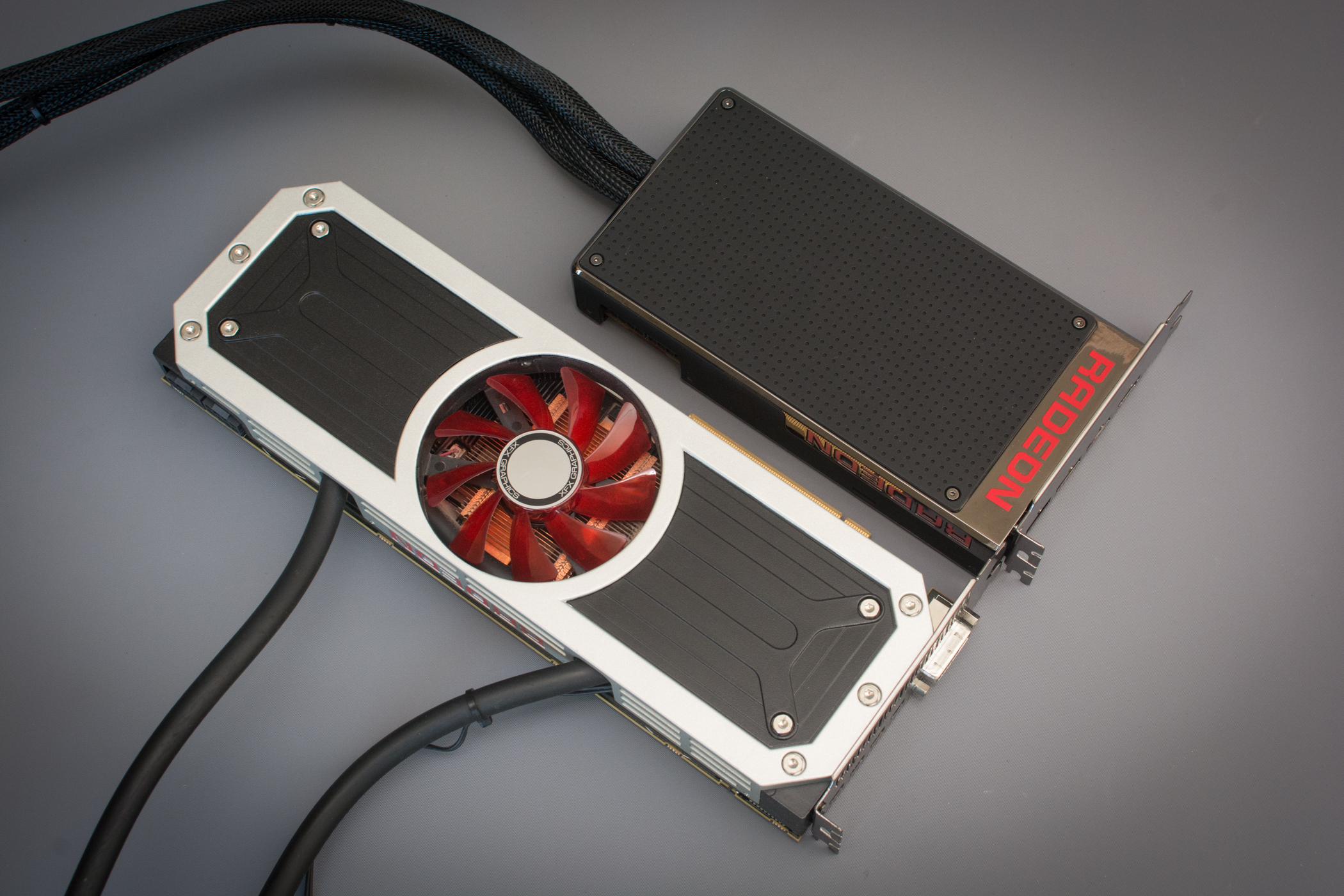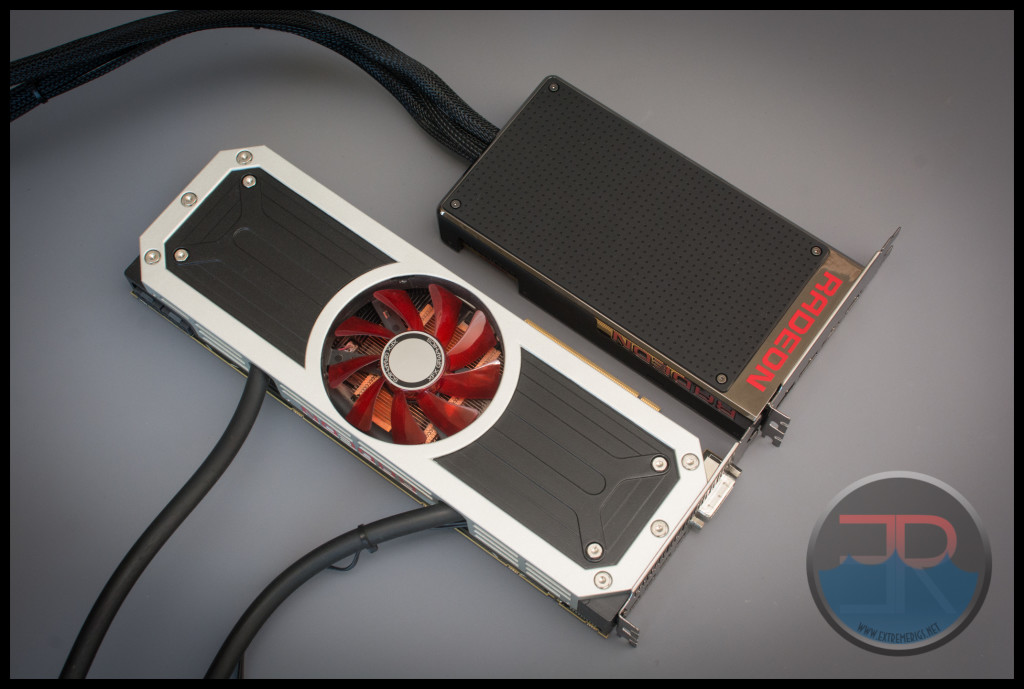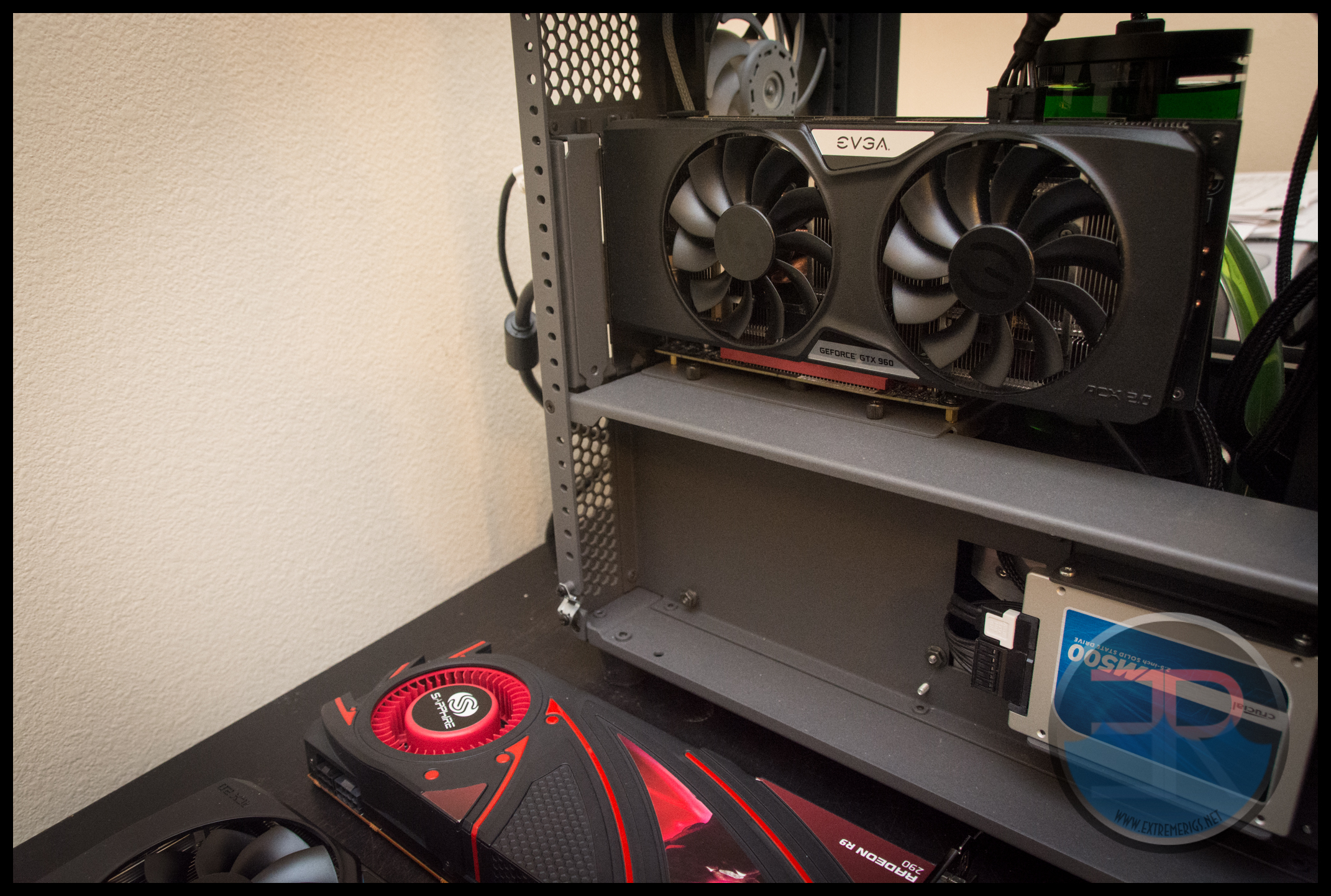At first glance the radiators seem identical. Once they are next to each other it is far easier to see the differences. The Fury X’s solution is just a tiny bit bigger: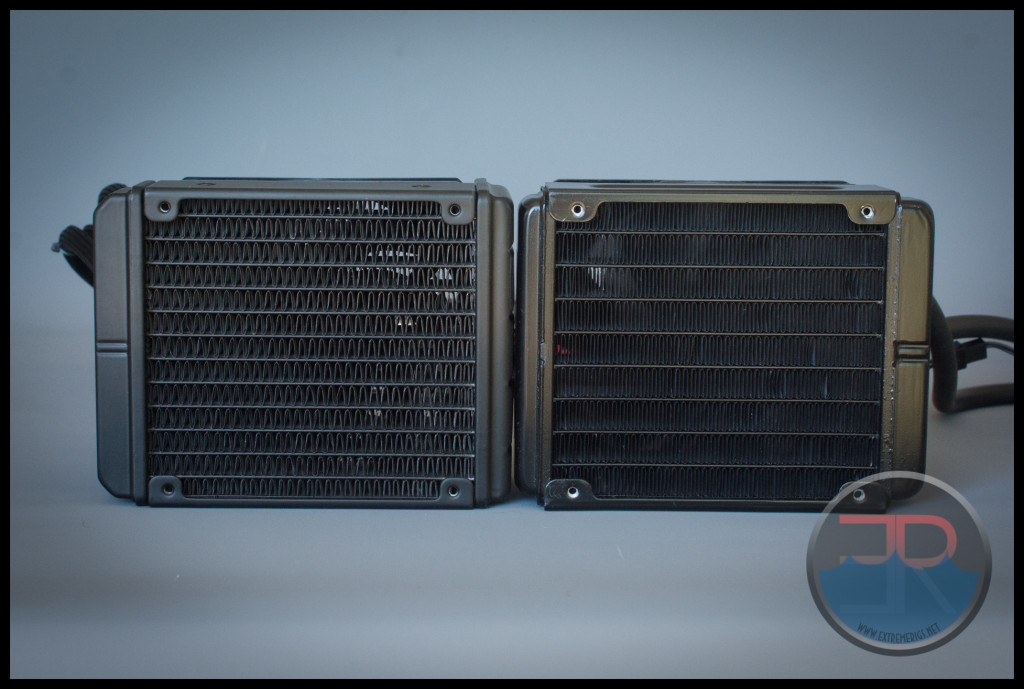
It feels more refined and more like a finished product than an engineering sample: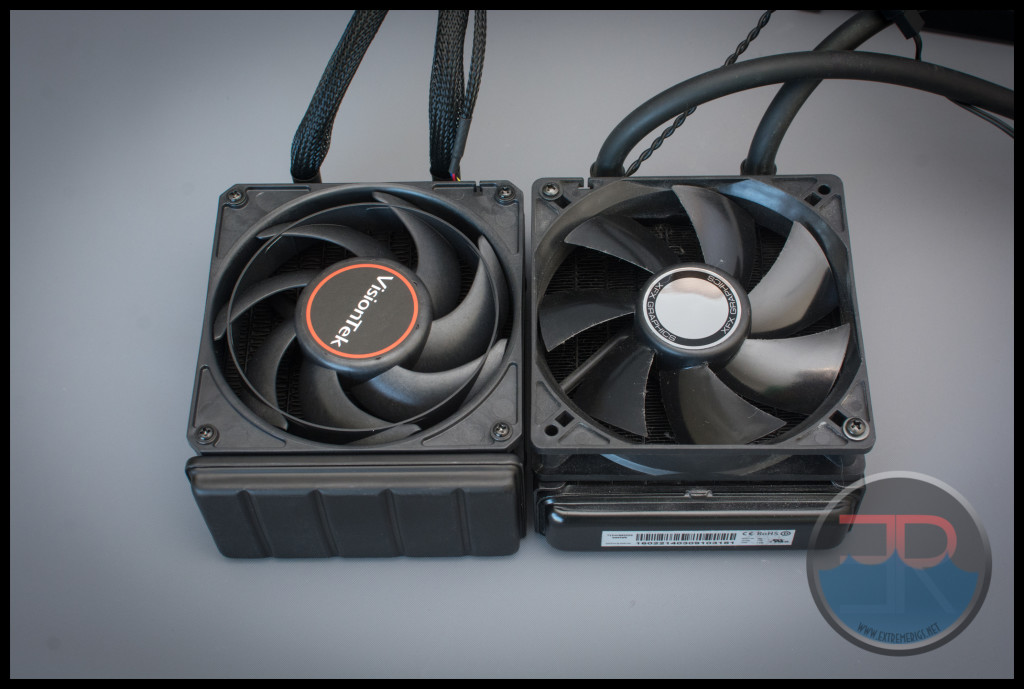
The finish on the fan and radiator match better and the sleeving really helps with the final look: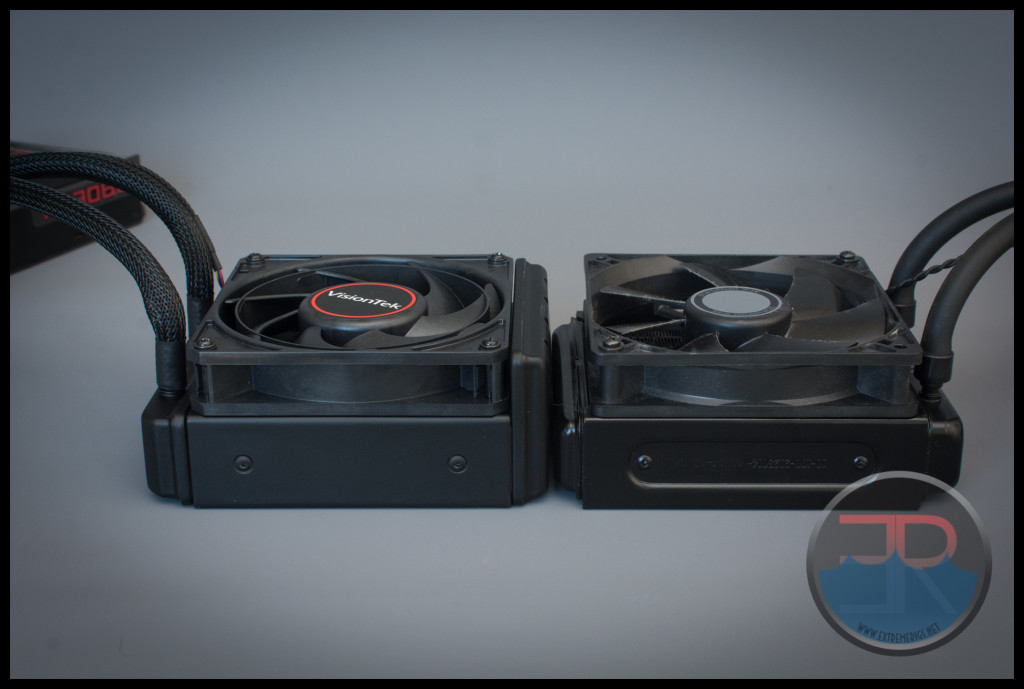
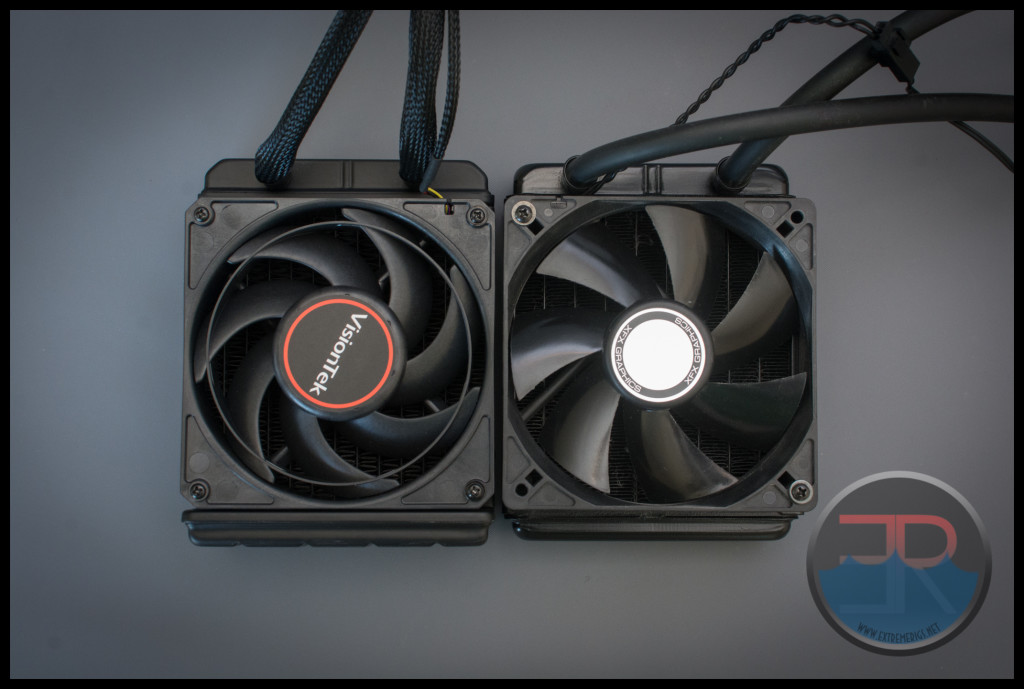
So the cooling systems are very similar indeed. However what is far more noticeable is the difference in the size of the GPUs themselves:
The Fury X is just a far more practical size. Not only will it fit in more mATX and mITX cases, but also more ATX cases. In fact it’s far shorter than even a “normal” graphics card like the 980 TI. 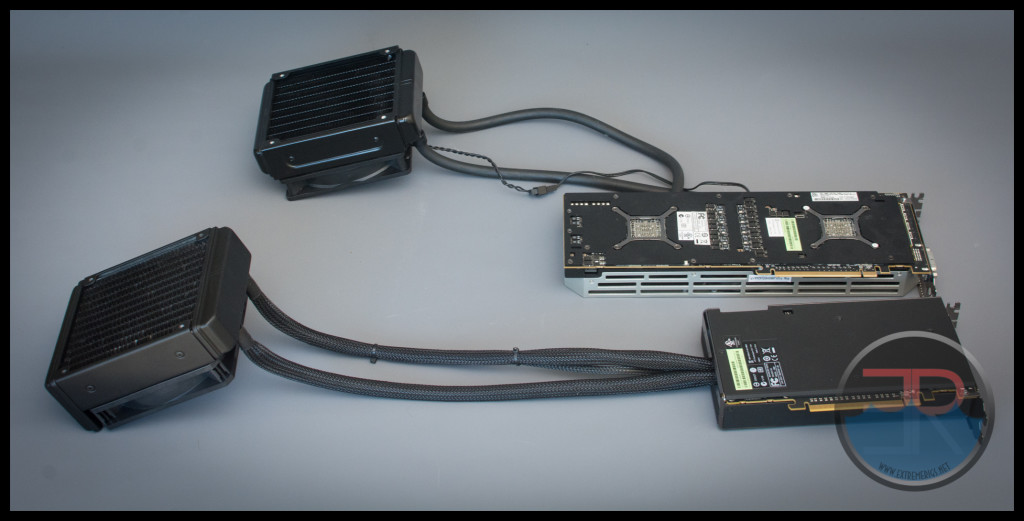
The 295×2 on the other hand is far longer than a “normal” card. It’s so long in fact that it goes well beyond a normal ATX motherboard and may not fit in all cases. 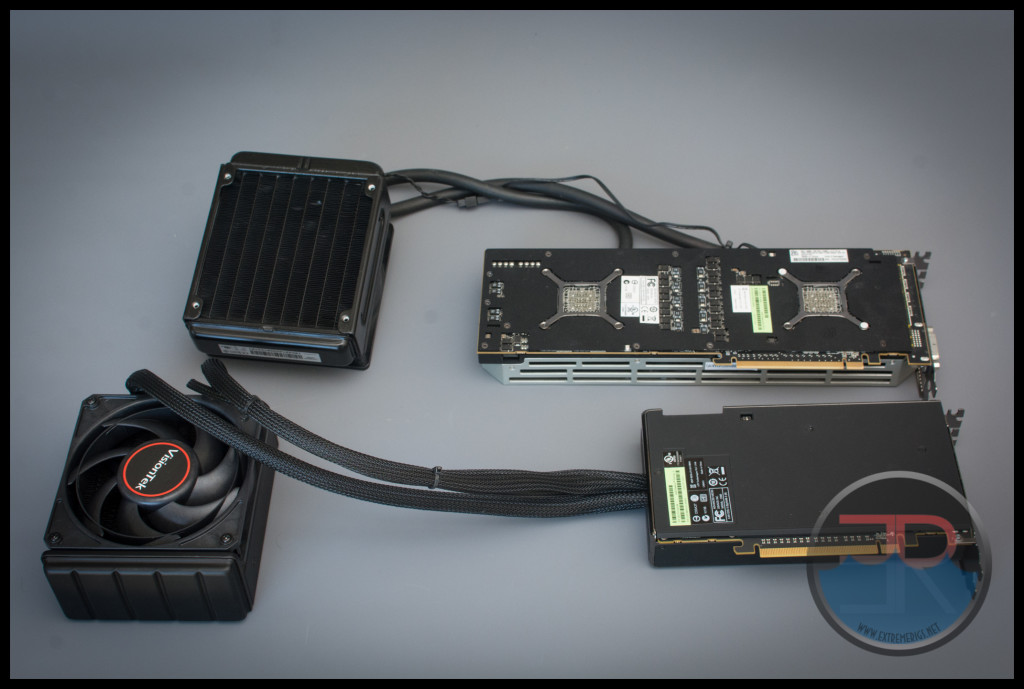
The 295×2 therefore had to have it’s tubes come out of the side of the rather than the far end. This again means the case needs to have enough width to enable those tubes to turn 90+ degrees. 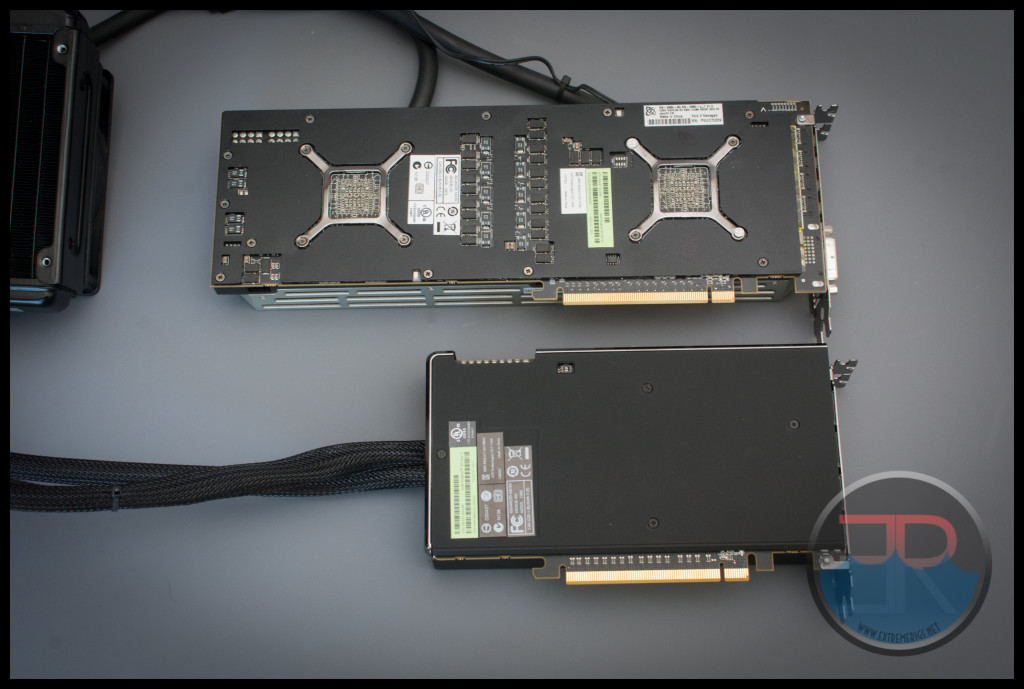
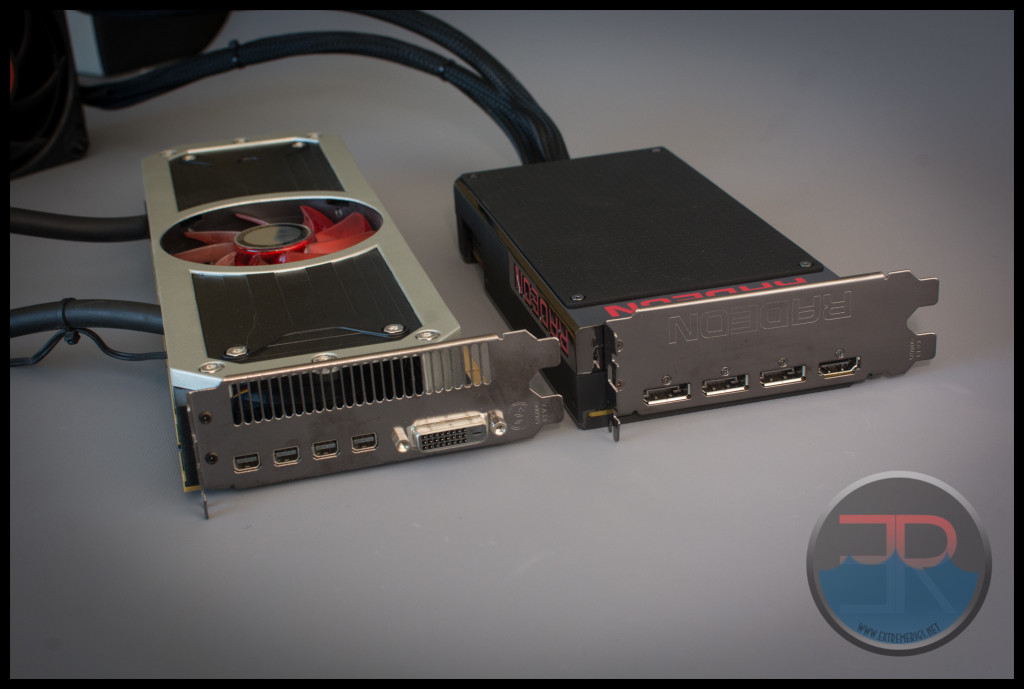
So in summary we have two cards that are in so many ways very similar, but yet in other ways very different. It’s going to be an interesting comparison then.
Test Setup Configuration
For our setup we used Asus’s Maximus VI Impact board along with Intel’s Devil Canyon CPU. The i7-4790k is watercooled inside a CaseLabs S3 with a decent overclock of 4.8GHz. Memory is 2x4GB of Corsair Dominator GT running at 2133 CL9. Power is provided by a Corsair AX 850. Storage is provided by a 960GB Crucial M500 SSD.
We will be running tests both at 1920 x 1080 (1080p) & 3840 x 2160 (UHD or 4k) using a Dell P2715Q monitor. Despite the high cpu overclock there may be occasions at 1080p where the CPU may limit performance and so we show total CPU load also. Bear in mind that poorly threaded games that do not utilize multiple cores well may not read 100% across all cores despite effectively throttling.
We use HWiNFO to record all of our data, FRAPS was used to measure frametimes. Windows 8.1 was used as well as the latest drivers available at the time.
Now let’s see some results!







